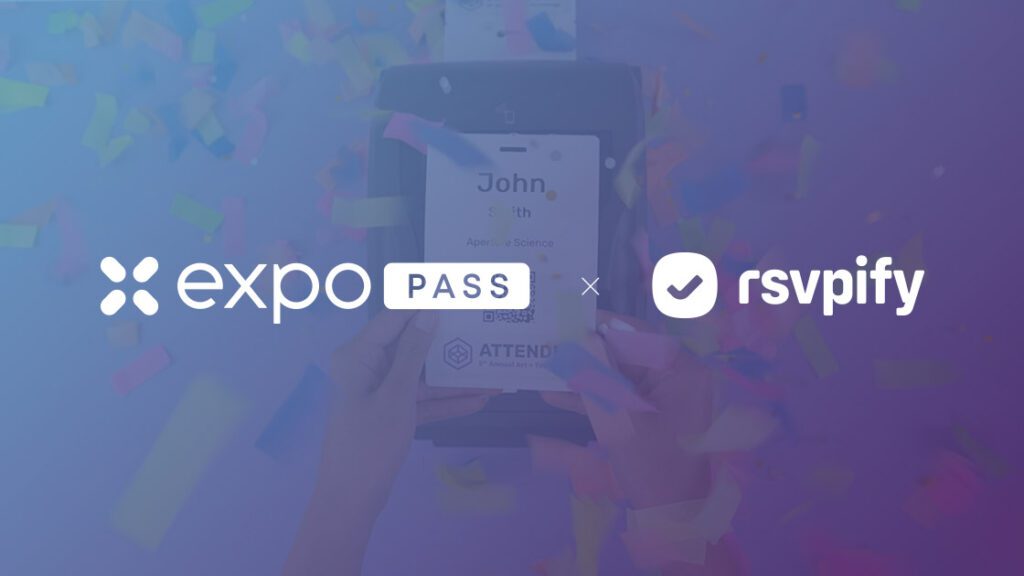Things are getting wild, planners. Technology advancements have transformed the event planning industry in the past year alone. According to some, we’re on the edge of an AI-run world that would make even popular science fiction look bland.
Let’s take a breath. While it’s easy to get caught up in the excitement of event tech trends and their possibilities, the hype can overshadow the reality—or worse, it can distract from the Human element. If you’re going to make the most of recent event tech without impairing human connection, you must understand the reality of these tech trends.
Whether AI tools, the Metaverse, or event diagramming tools, tech trends enhance the event experience; they don’t define it. Let’s peel back the current on the Wizard of Oz that is event tech to learn what they are and, more importantly, what they aren’t.
Metaverse.
The Metaverse is the next evolution in virtual and hybrid event planning. Even a basic description sounds like it came from a Sci-Fi novel. Simply put, the Metaverse is a digital landscape where attendees can see and interact with each other in the form of digital avatars. You’ll recognize this concept if you’ve seen Ready Player One or Tron.
But hold up. You won’t be cruising in a digital DeLorean any time soon. However, this event trend can elevate engagement for virtual events. They can explore a digital venue, attend Metaverse-exclusive keynotes, and even enjoy entertainment performances. One early example of a virtual concert is Ariana Grande’s Rift Tour in Fortnite.
While this is exciting, it can unintentionally alienate a portion of your audience. A fully immersive experience may require costly equipment like virtual headsets, audio components and software. Keep this in mind when considering this tech trend.
There are accessible forms of virtual reality (VR) and augmented reality (AR). VR and AR can be used to spice up product demonstrations or to display complex concepts, such as sustainability initiatives in architecture. Offer 3D renderings of green buildings that allow attendees to engage deeper with information. These can be incorporated into hybrid events to give in-person attendees a more immersive experience.
Event chatbots.
You can’t be everywhere at once, and even the most dedicated customer support staff can’t answer every question immediately. That’s where AI chatbots, like ChatGPT, come in! These nifty digital assistants give attendees access to information throughout the event experience.
For example, an attendee trying to decide between sessions could ask, “When does [blank] start?” The chatbot would understand the question and provide the relevant answer. “3:00 PM.” This goes for almost anything an attendee could want to know, from session start times to bathroom locations and catering menus.
AI chatbots can also provide personalized suggestions based on interests, schedule needs, industry position, and other relevant attendee data. This feature creates a more personal event experience for each attendee. Chatbots can also help translate information, allowing guests to engage in their native tongue and increasing event inclusivity. This tool helps attendees get the most out of their event experience.
Keep in mind that answers aren’t always 100% accurate. If you want to leverage this event tech trend, we advise “rehearsing” with your AI chatbot. Once programmed with the necessary information, pose a range of questions your attendees will likely ask. Pose each question multiple times to ensure consistency.
AI content creation.
Content creation is one of the hottest topics in AI. Almost immediately after generative AI hit the scene, you had people discussing whether it would be able to make the next Oscar-winning film.
Not quite. However, it can help growing planners improve content creation and inspire innovative ideas. AI tools like ChatGPT can create “first draft” scripts for videos, brainstorm marketing slogans, write captions, and complete a content analysis based on current marketing trends. With this digital support, planners can spend more time iterating on ideas to create more unique content.
Generative AI recognizes patterns—such as common elements of an Andy Warhol painting—and reproduces them in response to your input; in this case, “Create an advertisement for the [event name] in the style of Andy Warhol.” Aside from the shaky copyright issues of this example, it demonstrates how AI produces an “average” of known examples.
You don’t want your content to be average! Use AI to brainstorm or create first drafts your team can elevate with unique, personal flair. Some companies even use it to identify common designs or marketing concepts and put this on a “blacklist,” helping their team to avoid overdone concepts and invent something original.
This is an exciting tool, but it can be easy to forget that great content connects to your audience’s emotions. You must still consider their interests, pain points, and goals to create content that drives engagement. In other words, you need to create with a tool that humans have and AI doesn’t—empathy.
Social media integration.
While this technology is far from new, it’s ever-evolving. Social media can expand your reach, supplement in-event sessions, further network connections, and increase engagement before, during, and after the event.
According to some reports, 3 out of 4 people make purchasing decisions after seeing social media advertisements. Social media is as relevant as ever for building audiences and driving event registrations. The trick is to use social media to foster community and speak to your attendees’ interests, needs, and goals.
Create social media content that your audience can connect to. Types of content include event recaps for those who couldn’t attend, industry insights, personal stories of overcoming challenges, and vendor/sponsor highlights.
Design opportunities during the event experience for attendees to share their stories. Create an event-specific hashtag and encourage attendees to share photos and videos from the event using the hashtag. Incentivize them with contests and gamification to increase engagement. Put these stories on display with a live social media wall at your event, where attendees can see their content displayed for all to see!
As we all know, social media can become a distraction. For this reason, social media integration should be engineered to drive community bonding. It is best when it connects attendees to their fellow guests and empowers them to share their stories and experiences.
Event diagramming tools.
Of all recent event tech trends, this one should be getting more hype. Event diagramming tools are the latest innovation to streamline and elevate the event planning process. Driven by photo-realistic 3D technology, you can organize your event within a digital landscape and share it with your team for optimized collaboration.
Using event diagramming tools, you can organize seating, floor plans, stages, and booth layouts with a simple drag-and-drop interface. You’ll see how everything fits within your venue and predict foot traffic issues more accurately. When visualizing the event experience, there’s nothing more effective than an event diagramming tool.
As exciting as 3D visualizations are, collaboration is the real advantage of this tech trend. Separate teams can work on the same diagram, evolving the layout together. This seamless coordination strengthens communication between departments, guaranteeing everyone is on the same page, including event sponsors, vendors, and venue owners.
Of course, adjustments will always be needed when you arrive on-site. Event diagramming tools can’t prevent unexpected challenges, but they can smooth the planning process and significantly improve communication between teams.
Event tech for human experiences.
Technology may evolve, but our goal remains the same: to craft unforgettable experiences that drive human connections and growth. Whatever new tools emerge, it’s essential to remember that, as exciting as they may be, they’re irrelevant if they can’t help our guests connect, grow their businesses, hone new skills, and foster community.
When considering whether to use event technology, consider how it can improve the human experience. It’s helpful to boil this down to a single phrase, making it easier to remember the human purpose of event technology. Consider the examples below.
Human-centered tech uses
- Metaverse — increase engagement/connections for virtual attendees
- AI Chatbots — empower attendees with needed information
- AI Content Creation — inspire creativity and unique content for attendees
- Social media — foster community and uplift attendee voices
- Event Diagramming tools — connect your team around a shared vision
Don’t get lost in the hype. As new event tech emerges, always consider how it can aid the human experience and, most importantly, its limitations. A nuanced understanding of these tools will allow you to make the most of them without becoming overly dependent on their (sometimes overhyped) benefits.








